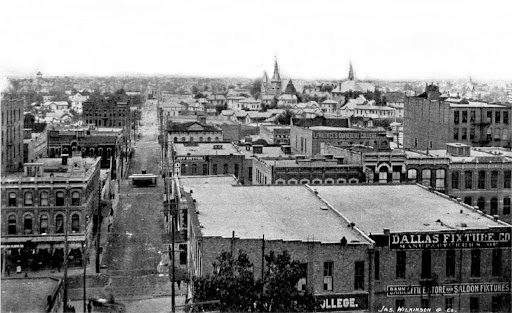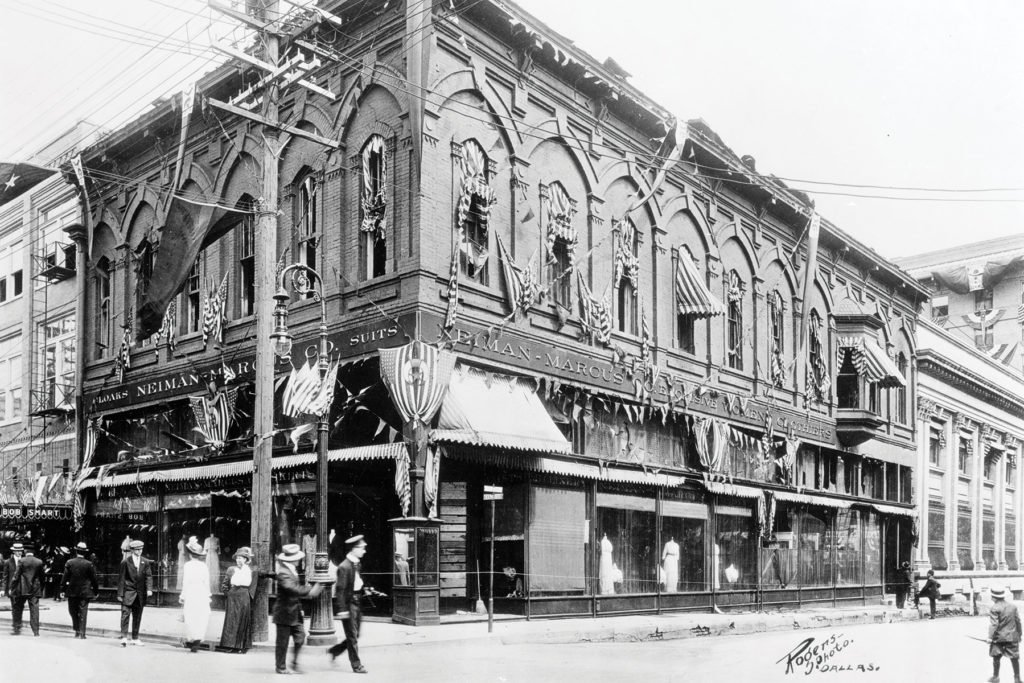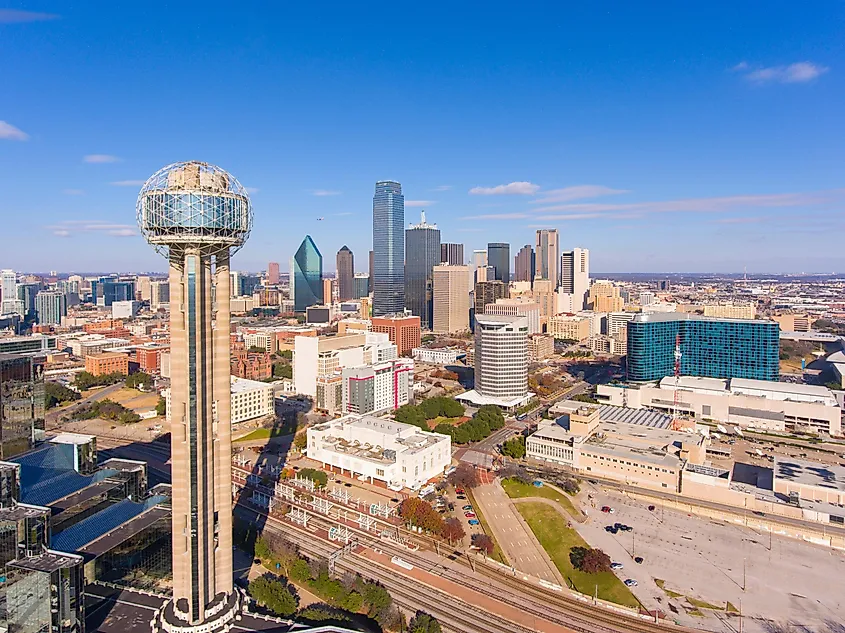Dallas Then and Now
Dallas Then
Dallas is a major city located in north-central Texas, serving as the seat of Dallas County.
Positioned along the Trinity River, the city sits at the confluence of the river’s three forks, surrounded by prairies, gentle hills, and tree-lined creeks.
Known for its hot summers and mild winters, Dallas experiences a moderate to high level of humidity.
As the third-largest city in Texas, Dallas is a key component of the vast Dallas–Fort Worth metropolitan area, often referred to as the Metroplex.
This region includes several other significant cities such as Fort Worth, Arlington, and Plano.
Dallas itself operates under a council-manager government, a structure it adopted in 1931.
The city is an economic, cultural, and political hub in the region, playing a pivotal role in shaping the development and growth of the surrounding counties, including Collin, Denton, Rockwall, and Kaufman.

Dallas History
Dallas, Texas, has a rich history that dates back to 1841, when John Neely Bryan, a lawyer and trader from Tennessee, established the first cabin on the banks of the Trinity River.
Early settlers, including Swiss, German, and French immigrants, contributed to the city’s growth, with the community being formally organized in 1844.
The city’s name is believed to have originated from either early settler Joseph Dallas or U.S. Vice President George Mifflin Dallas.
Related Article: Miami Then and Now
By the late 1800s, Dallas had transformed into a booming commercial hub, particularly after the railroads arrived in the 1870s, bringing with them a vast wholesale market.
Cotton, grain, and leather were key drivers of the economy, and by 1907, the Dallas Cotton Exchange was one of the world’s largest cotton markets.
The city’s economy expanded further with the discovery of oil in East Texas in the 1930s, making Dallas a center for the petroleum industry.
Related Article: Washington D.C. Then and Now
Dallas’ post-World War II growth was marked by the establishment of aircraft manufacturing plants, followed by the rise of electronics and automobile industries.
The city gained international attention in 1963 when President John F. Kennedy was tragically assassinated in Dealey Plaza.
By the 1970s, the opening of Dallas-Fort Worth International Airport in 1974 helped position the city as a key transportation and corporate hub, attracting business and investment from around the world.
Related Article: Boston Then and Now

While oil was once a dominant force in the local economy, its decline in the 1980s led to diversification. Today, Dallas has a thriving economy supported by finance, technology, telecommunications, and healthcare.
It remains a key banking and trade center in the Southwest, hosting over 6,000 corporate headquarters, including major telecommunications and tech firms.
The city is known for its cosmopolitan lifestyle, with an impressive skyline filled with modern skyscrapers like the Bank of America Plaza and Reunion Tower.
Related Article: San Francisco Then and Now
Dallas is also recognized for its cultural and educational institutions.
The Dallas Museum of Art, the Morton H. Meyerson Symphony Center, and the Kalita Humphreys Theater are highlights of the city’s vibrant arts scene.
Higher education is another strength, with institutions such as Southern Methodist University, the University of Texas Southwestern Medical Center, and several community colleges contributing to the region’s intellectual and professional growth.
Related Article: Panama City Then and Now
Moreover, Dallas’ diverse population, which includes significant African American and Hispanic communities, reflects the city’s inclusive and dynamic character.
Dallas’ role as a major transportation hub, with one of the busiest airports in the world and an extensive network of highways, ensures its continued influence on both national and international levels.
Related Article: Quito Then and Now
The city offers an array of recreational activities, including professional sports teams such as the Dallas Cowboys and Dallas Mavericks, along with lakes and parks like White Rock Lake.
As a thriving city with a rich cultural heritage and a diversified economy, Dallas continues to be a major player in the global landscape.
Related Article: Santiago Then and Now
Dallas Now

Dallas, the largest city in the Dallas–Fort Worth metroplex, is a major urban hub located in North Texas.
As of the 2020 census, it had a population of over 1.3 million, making it the ninth-most populous city in the United States and the third-largest in Texas.
The city is at the heart of the largest metropolitan area in the Southern U.S. and stands as a key cultural and economic center.
Related Article: Bogota Then and Now
Dallas is notably the largest inland metropolitan area in the U.S. without a direct navigable connection to the sea, which has contributed to its prominence as a major transportation hub.
Dallas’ growth and economic prominence can be traced back to the development of major railroad lines in the 19th century, which facilitated the transportation of cotton, cattle, and later oil, thereby transforming the city into a commercial powerhouse.
The construction of the Interstate Highway System further reinforced Dallas’ role as a transportation nexus, as it connects the city to regional, national, and international markets.
Related Article: Lima Then and Now
In addition to its road networks, Dallas is home to Dallas Fort Worth International Airport, one of the busiest airports in the world, solidifying its status as an important transportation and logistics center.
The city has evolved into a diversified economic powerhouse, with key industries such as defense, financial services, information technology, telecommunications, and transportation driving its economy.
The presence of 23 Fortune 500 companies in the Dallas–Fort Worth metroplex, including 11 within the city limits, highlights Dallas’ importance as a business and corporate center.
Related Article: Buenos Aires Then and Now
Furthermore, the city is home to a thriving educational environment with over 41 colleges and universities in the metropolitan area, contributing to its educated workforce and fostering innovation and growth.
Dallas is recognized for its diverse population, which reflects a blend of ethnicities, cultures, and religious backgrounds.
This diversity is one of the city’s defining characteristics and has helped establish it as one of the most cosmopolitan cities in the U.S.
Related Article: Rio de Janeiro Then and Now
Additionally, Dallas is known for its significant LGBT community, which adds to the city’s rich cultural fabric.
The combination of economic opportunity, cultural diversity, and a high standard of living has made Dallas a dynamic and attractive city for people from all walks of life.
Geographically, Dallas spans 385.8 square miles, with a mix of urban development, green spaces, and bodies of water.
Related Article: Sao Paulo Then and Now
The city is at the heart of the larger Dallas–Fort Worth metroplex, which is home to a significant portion of Texas’s population.
The metroplex’s size and economic output make it one of the most influential regions in the state and the nation.
The city’s unique positioning as a business, cultural, and transportation hub ensures its continued relevance on both the state and national stage.
Related Article: Mexico City Then and Now
FAQs
Dallas is famous for its vibrant economy, especially in sectors like finance, technology, and defense.
It’s also known for its cultural attractions, including museums, theaters, and music venues.
The city is historically significant for the assassination of President John F. Kennedy in 1963.
Additionally, Dallas is famous for its sports teams, including the Dallas Cowboys (NFL) and the Dallas Mavericks (NBA).
Yes, Dallas is considered a great place to live due to its strong job market, diverse culture, and relatively low cost of living compared to other major cities like New York or San Francisco.
The city also boasts a variety of neighborhoods, excellent schools, and numerous recreational opportunities.
Dallas is generally more affordable than many other large U.S. cities, though the cost of living has risen in recent years.
Housing costs are reasonable compared to places like Los Angeles or San Francisco, but home prices and rent are increasing due to growing demand.
Utilities, transportation, and groceries are also fairly priced, making it a good option for those seeking a balanced lifestyle.
Dallas is located in the state of Texas. It is the largest city in the Dallas–Fort Worth metroplex, which is one of the largest metropolitan areas in the U.S.






























